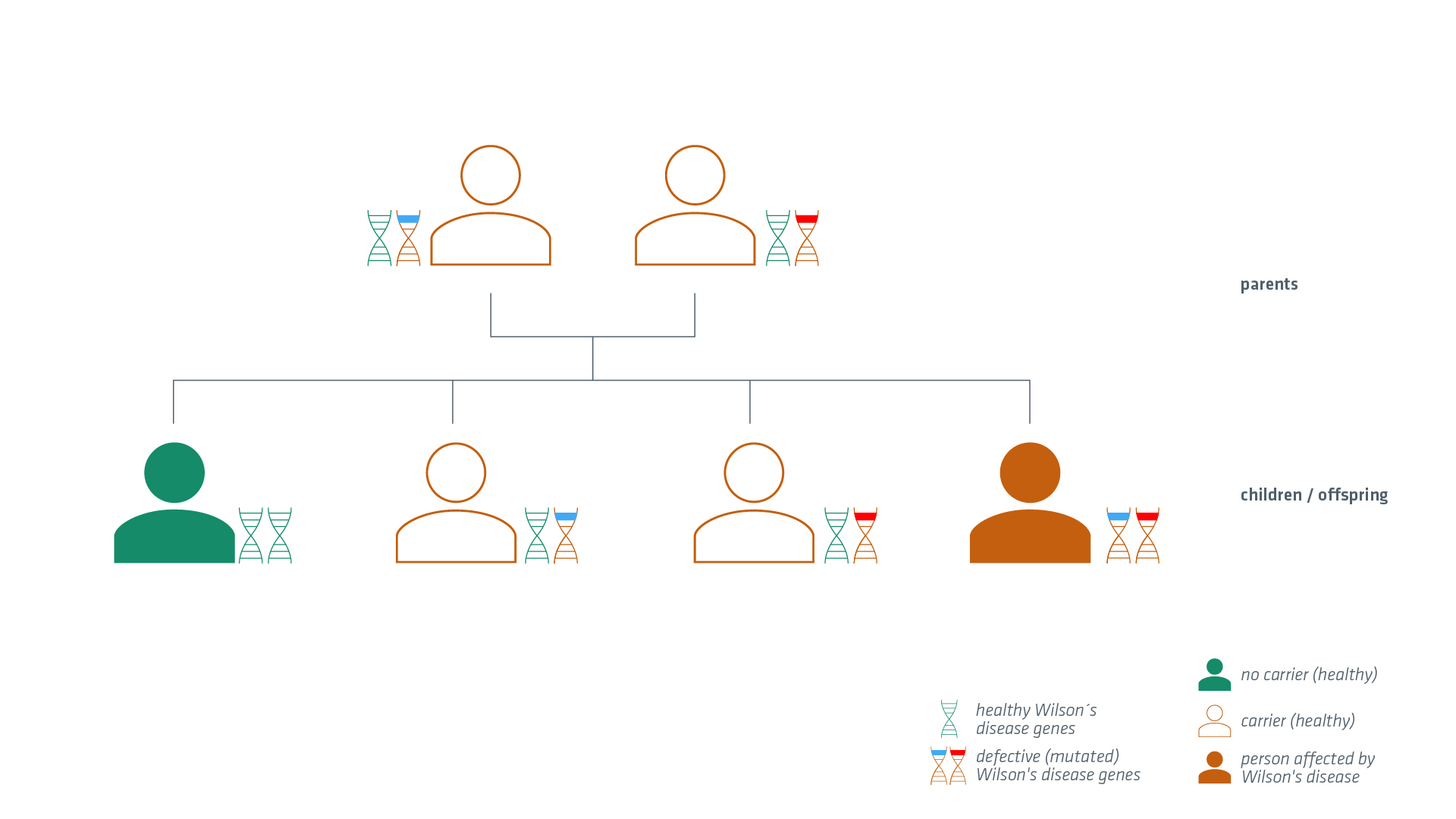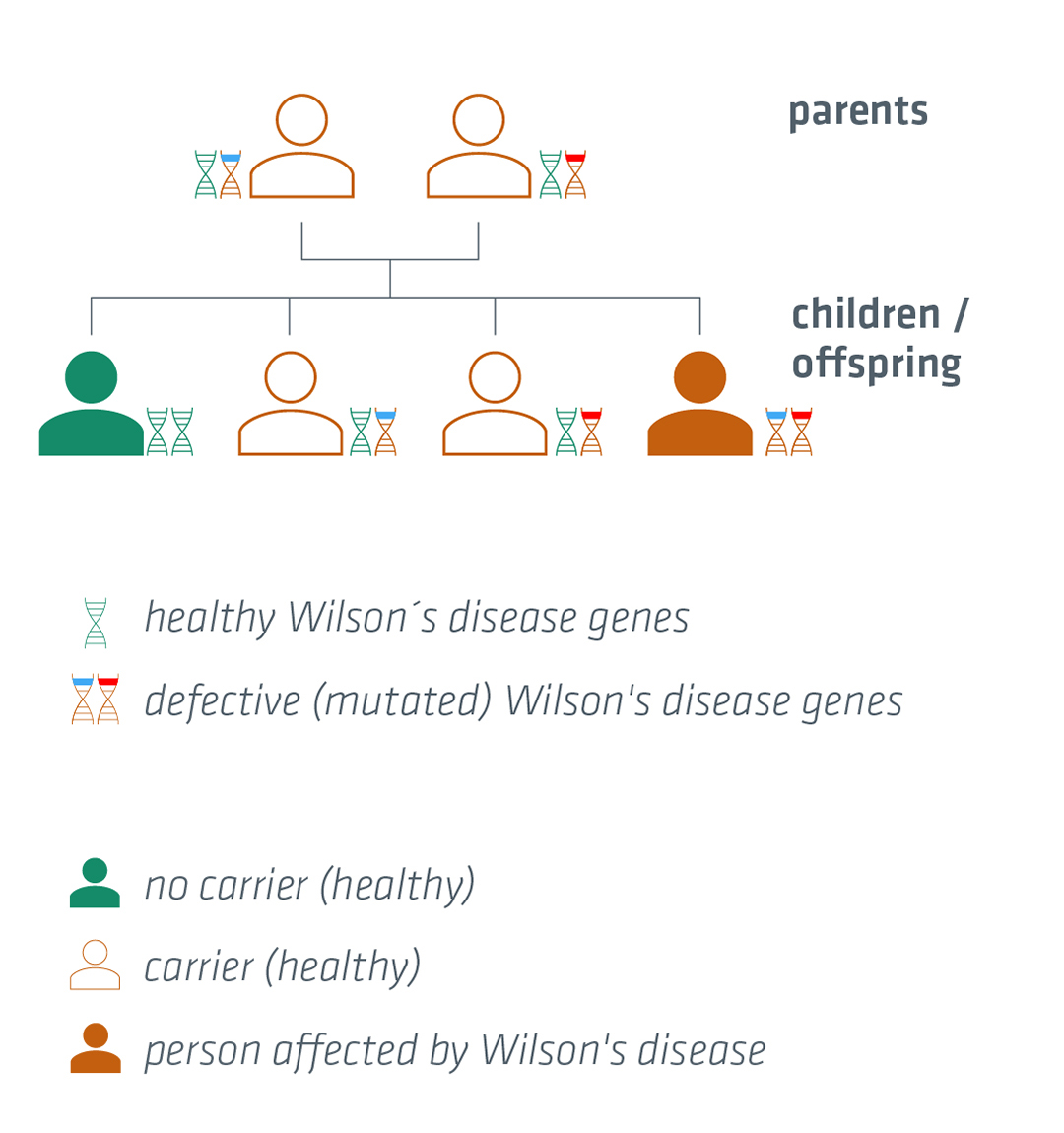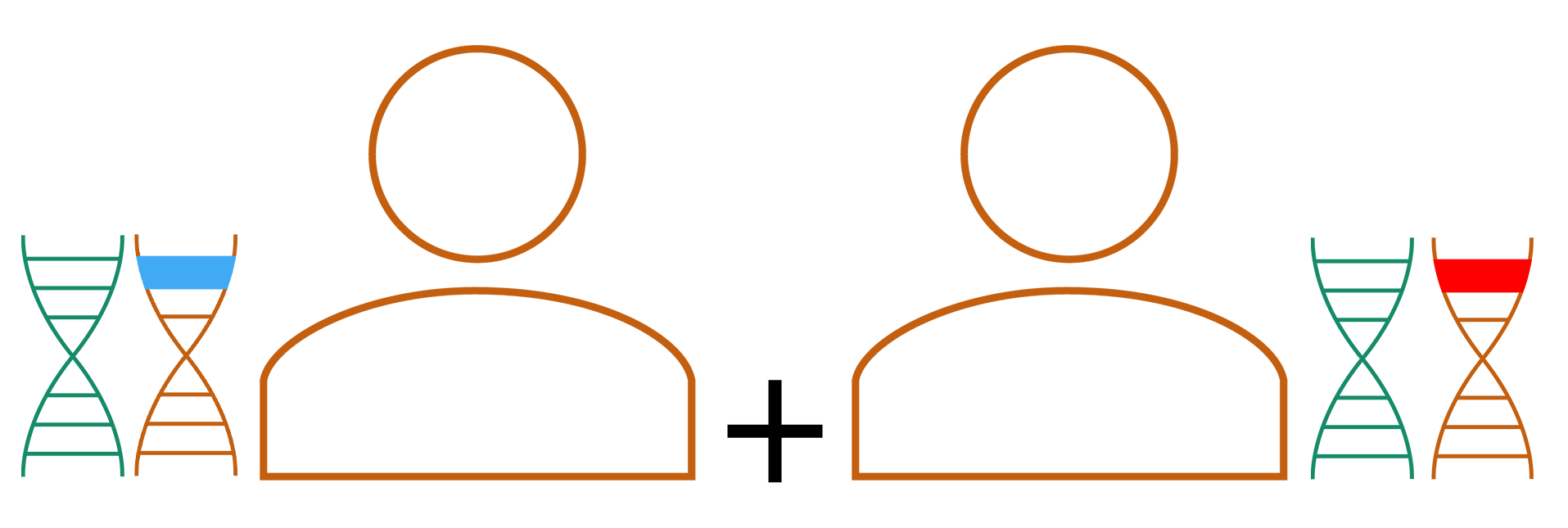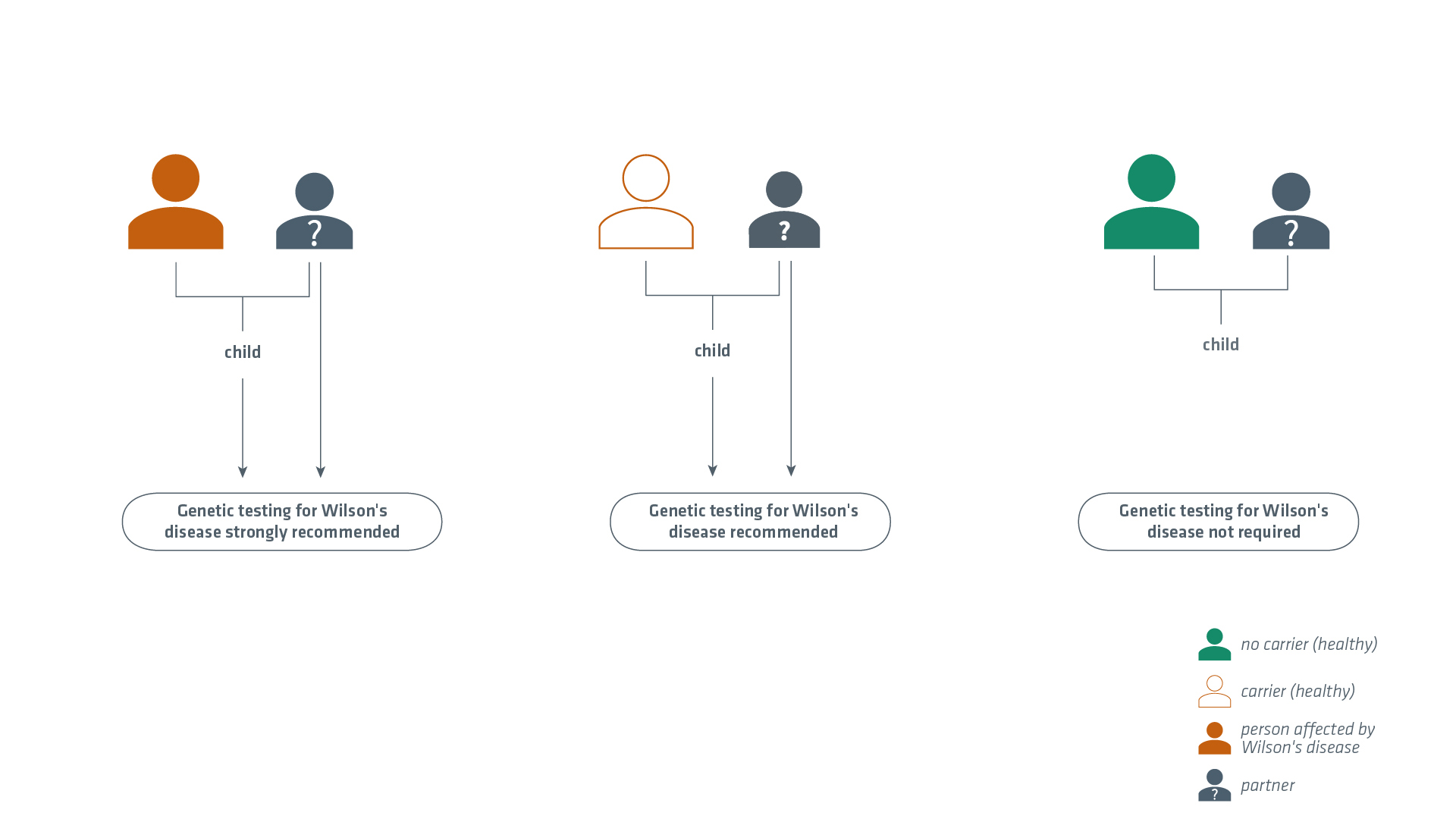Cause of the disease
Due to a defect on the 13th chromosome in the ATP7B gene, the excretion of copper via the bile ducts is impaired. The defective or mutated gene causes that the protein ‘ATP7B’, which is necessary for copper transport, is only produced by the organism in a non-functional or reduced functional state. It cannot act as a copper transporter in the liver cells, the hepatocytes.
As a result, the excess copper initially accumulates in the liver or the liver cells. When copper can no longer be stored in the liver, it enters the brain and other organs (e.g. the kidneys and the cornea of the eye). Over the years, this leads to a damaging accumulation of copper throughout the body.
Wilson's disease is inherited in an autosomal recessive manner. Autosomal means that the relevant genetic information is not located on a sex chromosome (= a ‘gonosome’), but on an autosome, which also includes the 13th chromosome with the ATP7B gene.
In genetics, recessive means ‘receding’ or ‘not appearing’. The defective Wilson gene is recessive to the healthy genetic make-up. If a person has a healthy and a defective gene, the healthy gene always wins out over the defective gene.
Who needs to be tested for Wilson's disease?
If a person in a family is diagnosed with Wilson's disease, the question of whether other family members also have Wilson's disease should be answered.
It is essential that ALL siblings of the affected person are tested for Wilson's disease. They have a relatively high probability of also having Wilson's disease, even if it is not (yet) symptomatic.
If indicative symptoms are present, the parents or extended family should also be examined for Wilson's disease.
You can find out how to screen for Wilson's disease here. As part of the screening for Wilson's disease, it is possible to find out whether a person is a carrier of this disease or whether no defective gene has been inherited and therefore there is no predisposition to Wilson's disease.
If several siblings in a family have been diagnosed with Wilson's disease at least once, the question arises for the affected person and for the other siblings as to whether their partners or their offspring should be tested for Wilson's disease or Wilson's disease carriers.
Nowadays, human genetic tests can be used to find this out. We recommend the following:






